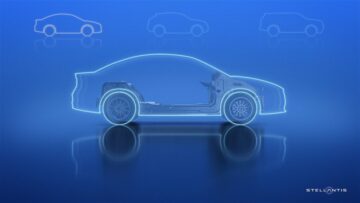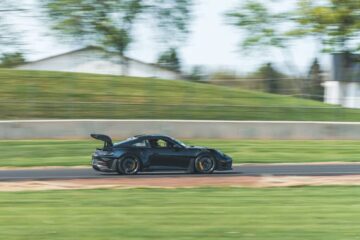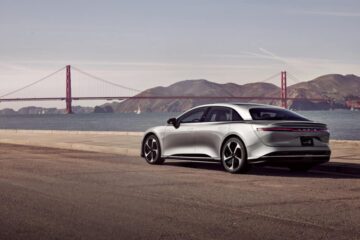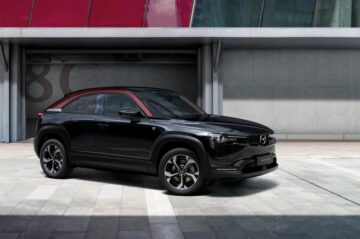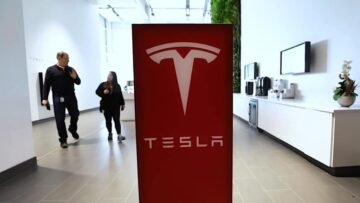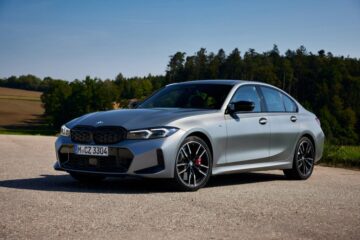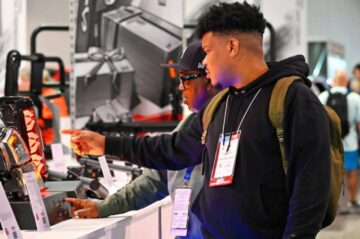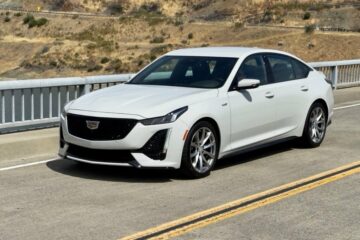Just a day after it reported a double-digit increase in February sales, Ford Motor Co. announced plans to boost production of an array of its most popular products.
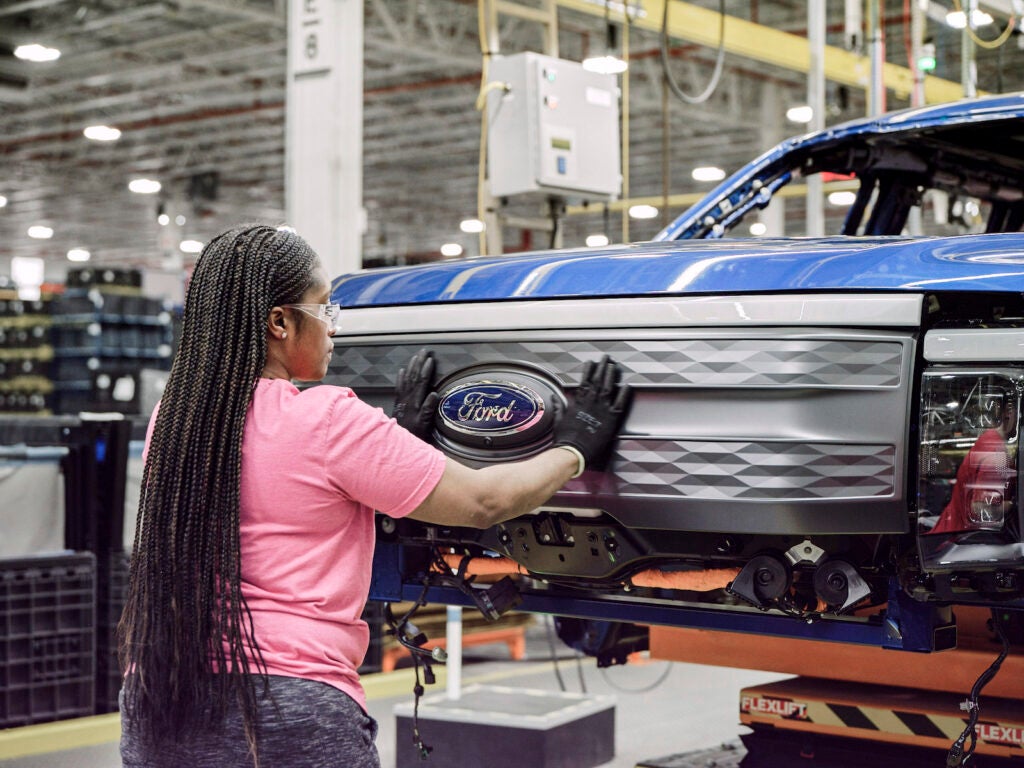
The move puts an emphasis on all-electric vehicles like the Mustang Mach-E and F-150 Lightning, which have been in short supply since launch. But it also covers some of the automaker’s other key models, such as the conventional F-150 and the Maverick pickup, the two offered in both gas and hybrid configurations.
“We have had a strong start to 2023 sales and we are moving to fast-track quality production,” said Kumar Galhotra, president of Ford Blue, the half of the automaker that focuses on gas and hybrid vehicles. “Increasing production benefits both our customers and our business.”
Semiconductor shortage could still pose a challenge
The planned production hikes suggest Ford is confident about getting the necessary supply of semiconductor chips. The auto industry has been struggling to line up all the chips manufacturers need since sales began recovering from the initial COVID pandemic recession.
Ford has been particularly hard hit by the semiconductor shortage, leaving it struggling to meet demand for many popular products. That includes the big F-150 pickup in conventional gas, diesel and hybrid forms because assembly plants have been idled repeatedly for days, even weeks, at a time. That’s one reason why the Chevrolet Silverado recently became the best-selling full-size pickup in the retail segment.
Whether Ford can get enough chips to stick to its more aggressive production schedule is uncertain. As TheDetroitBureau.com reported last month there are signs the worst of the shortage is over. But Ford is among the small list of manufacturers still thought to be struggling with supplies.

Unexpected EV demand
Ford also has had a hard time producing enough of its three all-electric models, the Mach-E, Lightning and the E-Transit version of the conventional Transit van. While the semiconductor shortage played a role, Ford also takes blame because it seriously underestimated market demand.
It initially geared up the Lightning plant to produce just 25,000 vehicles annually. Within weeks of the electric pickups debut it logged nearly 200,000 advance reservations. Ford is updating the Rouge Electric Vehicle Center in Dearborn, Michigan to bring capacity up to 150,000 by year-end.
Mach-E set to outsell the classic Mustang coupe
Ford first announced plans to boost production of the Mustang Mach-E in January, though it initially didn’t offer any detail. In its statement, it now says changes “at the plant will allow Ford to nearly double its hourly production and bring its annual manufacturing run rate to a targeted 210,000 units by years’ end.”
While it’s unclear how soon it will begin ramping up Mach-E production and how many it will be able to squeeze out this year, it’s becoming increasingly likely that the all-electric SUV version will outsell the classic gas-powered Mustang coupe. It came close to that last year.

Other production increases now scheduled include:
F-150 Lightning: The Rouge factory has already doubled capacity to around 50,000 all-electric pickups annually, but the goal is to hit a 150,000-vehicle run rate by the end of 2023, Ford said.
That still may not be enough to meet the initial flood of orders, considering Ford delivered only 15,617 Lightnings during 2022. And the flow has been disrupted for several weeks due to a battery fire in a holding lot that forced the automaker to temporarily halt production as it isolated and resolved the defect. Production now is set to resume on March 13, meaning the loss of nearly a month’s output.
Ford said Friday the increase in Lightning production will cost it $2 billion and see the addition of 3,200 new union jobs at the Rouge facility and two other plants.
Bronco Sport and Maverick: Ford scored big with the relaunch of the Bronco nameplate. There actually are two distinct product lines, including the smaller Bronco Sport. The Sport shares the same underpinnings with the Maverick which has helped revive the compact pickup segment.
Currently, potential buyers have to struggle to find a Bronco Sport on dealers lots. But the situation is even worse for those seeking a Maverick – especially the hybrid version. The order bank for the small pickup has been closed for months.
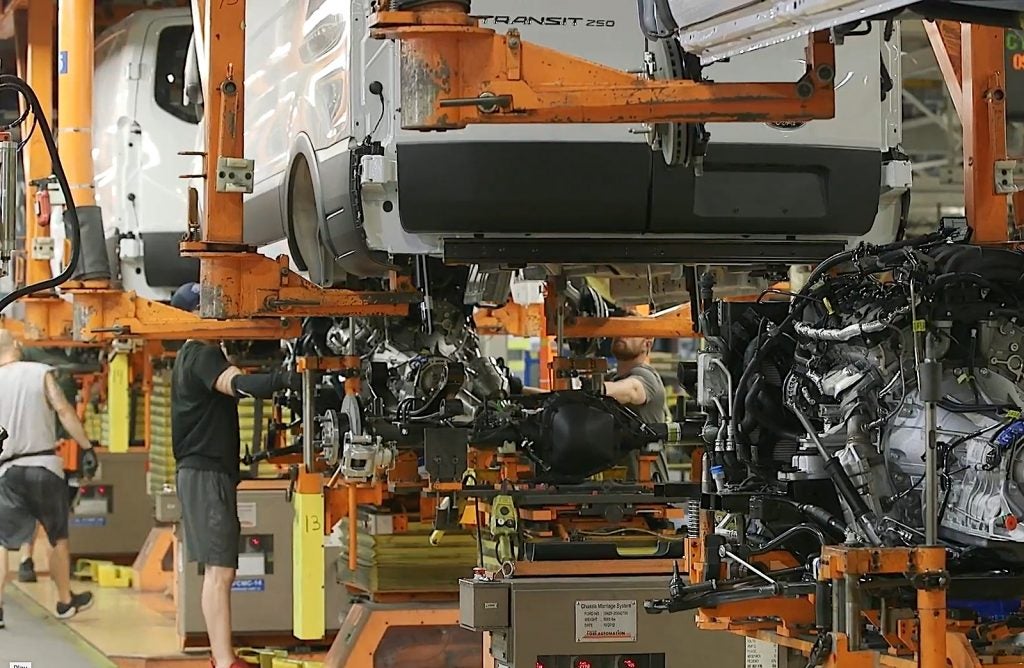
While Ford isn’t providing a breakout, it said that it will boost production of the Bronco Sport and Maverick by “more than 80,000 units this year.”
Transit and E-Transit: Demand for all-electric vans and delivery vehicles has far exceeded anyone’s expectations, much of that driven by a shift among online retailers such as Amazon and UPS. Ford just announced plans to supply nearly 10,000 electric vehicles to the U.S. Post Office.
But sales of the conventionally powered Transit line have also exceeded expectations, according to Ford. It was the best-selling van in the U.S. last year, the E-Transit the top-seller in its segment.
The automaker is adding a new crew to increase capacity at the Kansas City Assembly Plant producing both Transit and E-Transit. Capacity will rise to 38,000 annually. The project will cost $95 million and create 1,100 new union jobs.
F-150 and F-150 PowerBoost: Ford’s F-Series has been the country’s best-selling pickup line for 46 consecutive years and the automaker wants to keep it that way.
It said Friday that it is “looking at ways to increase production” at the Dearborn (Michigan) Truck Plant of both the conventional and PowerBoost hybrid versions of the mainstream F-150 line.
Specific details have yet to be released but some of the investment going into Dearborn should also be covered by the spending planned for the Lightning. Partially completed bodies for the electric pickup are first assembled at the Dearborn Truck Plant and then shuttled over to the Rouge Electric Vehicle Center where they are mated to their battery-powered driveline.
- SEO Powered Content & PR Distribution. Get Amplified Today.
- Platoblockchain. Web3 Metaverse Intelligence. Knowledge Amplified. Access Here.
- Source: https://www.thedetroitbureau.com/2023/03/ford-planning-big-production-increases-for-key-gas-hybrid-electric-models/
- 000
- 1
- 10
- 100
- 2022
- 2023
- a
- Able
- About
- According
- actually
- addition
- advance
- After
- aggressive
- All
- all-electric
- all-electric vehicles
- already
- Amazon
- among
- and
- announced
- annual
- Annually
- around
- Array
- assembled
- Assembly
- auto
- Bank
- battery
- because
- becoming
- began
- benefits
- Big
- Billion
- Blue
- boost
- boosting
- breakout
- bring
- business
- buyers
- Can Get
- Capacity
- Center
- Changes
- Chevrolet
- Chips
- City
- classic
- Close
- closed
- COM
- Company’s
- Completed
- confident
- configurations
- consecutive
- considering
- conventional
- Cost
- could
- country’s
- covered
- covers
- Covid
- create
- Customers
- day
- Days
- delivered
- delivery
- Demand
- detail
- details
- diesel
- distinct
- double
- doubled
- down
- driven
- during
- Electric
- electric vehicle
- electric vehicles
- emphasis
- enough
- especially
- EV
- Even
- expectations
- Facility
- factory
- far
- February
- Find
- Fire
- First
- flat
- flood
- flow
- focuses
- Ford
- forms
- Friday
- from
- front
- GAS
- geared
- get
- getting
- goal
- going
- Half
- Hard
- helped
- Hikes
- Hit
- holding
- How
- HTTPS
- Hybrid
- in
- include
- includes
- Including
- Increase
- Increases
- increasing
- increasingly
- industry
- initial
- initially
- investment
- isolated
- IT
- January
- Jobs
- Kansas
- Kansas City
- Keep
- Key
- Last
- Last Year
- launch
- leaving
- lightning
- likely
- Line
- lines
- List
- loss
- Lot
- Mainstream
- Manufacturers
- manufacturing
- many
- March
- Market
- materials
- maverick
- max-width
- meaning
- Meet
- metal
- Michigan
- million
- models
- Month
- months
- more
- most
- Most Popular
- Motor
- move
- moving
- nearly
- necessary
- Need
- New
- occasionally
- offer
- offered
- Office
- ONE
- online
- order
- orders
- Other
- pandemic
- particularly
- Pickup
- planned
- planning
- plans
- plants
- plato
- Plato Data Intelligence
- PlatoData
- played
- Plenty
- Popular
- Post
- post office
- potential
- powered
- president
- produce
- Product
- Production
- production increases
- Products
- project
- providing
- Puts
- quality
- ramping
- Rate
- reason
- recently
- recession
- recovering
- relaunch
- released
- REPEATEDLY
- Reported
- resolved
- resume
- retail
- retailers
- Revive
- Rise
- Rock
- Role
- Run
- Said
- sales
- same
- says
- schedule
- scheduled
- seeking
- segment
- semiconductor
- set
- several
- Shares
- shift
- Short
- shortage
- shortages
- should
- Shut down
- Signs
- since
- situation
- small
- smaller
- some
- Soon
- Spending
- Sport
- Squeeze
- start
- Statement
- Stick
- Still
- strong
- Struggle
- Struggling
- success
- such
- supply
- takes
- targeted
- The
- their
- this year
- thought
- three
- time
- to
- transit
- truck
- Trucks
- u.s.
- Uncertain
- underpinnings
- union
- units
- UPS
- vehicle
- Vehicles
- version
- ways
- Weeks
- which
- while
- will
- within
- workers
- Worst
- year
- years
- zephyrnet

